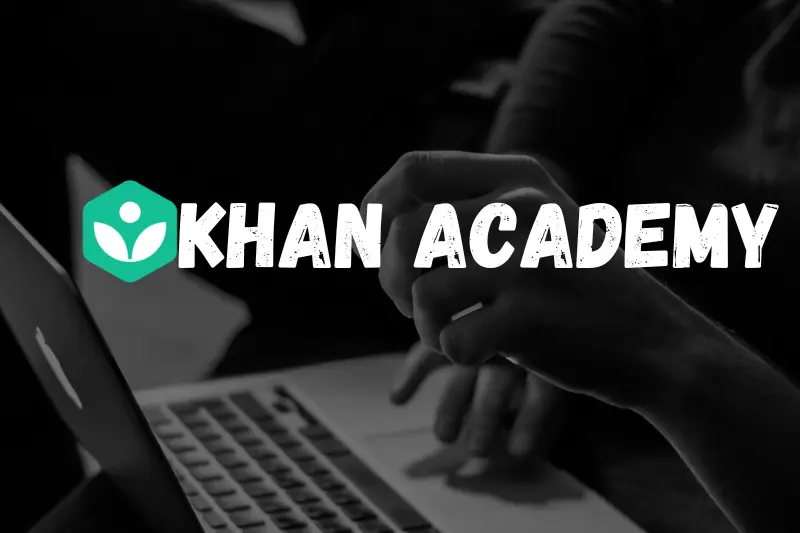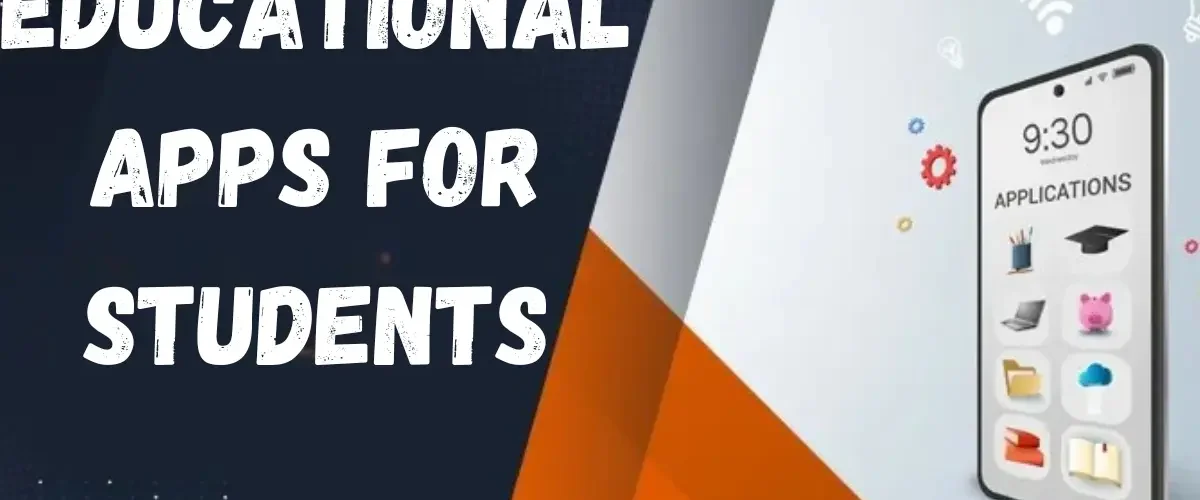The classroom has come a long way from the traditional chalk and blackboard method. In today’s rapidly advancing technological landscape, educational apps for students have transformed the way knowledge is delivered and absorbed.
Teachers no longer need to be wary of mobile devices in class, as many apps now serve to enhance the learning experience rather than distract from it. With the wide array of free educational apps available, teachers and students can access high-quality resources, often without spending a dime.
From language learning to complex math problems, these apps offer something for everyone, whether you’re a kindergarten teacher or a college professor. Here’s a detailed look at over 18 of the most valuable educational apps for students across various subjects.
1. Khan Academy

Khan Academy is one of the most well-known and trusted educational platforms. With a vast collection of free video lessons, practice exercises, and quizzes, it covers a broad range of subjects, including Math, Science, Economics, History, and even Art. The app is designed for students of all ages, from elementary school learners to university students tackling complex calculus. What makes Khan Academy unique is its personalized learning dashboard, which allows students to learn at their own pace. Teachers can monitor students’ progress and provide additional support based on their individual needs. With its comprehensive library, Khan Academy has become an indispensable tool for students and teachers worldwide.
2. Duolingo
Duolingo has revolutionized language learning by turning it into an interactive and gamified experience. Students can learn dozens of languages, from widely spoken ones like Spanish and French to less commonly taught languages like Welsh or Esperanto. The app breaks down each language into bite-sized lessons that are fun and easy to complete in a few minutes a day. Duolingo incorporates elements like points, badges, and leaderboards to keep students motivated, making it both educational and enjoyable. It’s a fantastic tool for both beginners and more advanced learners who want to improve their linguistic skills.
3. Quizlet
Quizlet is an essential app for any student who needs help with memorization or preparing for exams. The app allows students to create custom flashcards with terms, definitions, historical facts, and more. Quizlet also provides access to millions of pre-made study sets created by other users, covering virtually every subject imaginable. Students can test their knowledge with practice quizzes and engage in collaborative study sessions with classmates. Quizlet’s variety of study modes, including games and timed quizzes, makes learning interactive and fun, while its intuitive interface makes it easy for students of all ages to use.
4. Photomath
Photomath is a game-changer for students struggling with math. The app uses a phone’s camera to scan and solve math problems, providing step-by-step solutions to help students understand the process. Whether working on basic algebra or more advanced calculus, Photomath breaks down complex problems into easily understandable steps. By explaining the methodology behind each solution, it helps students gain a deeper understanding of math concepts and learn how to approach similar problems in the future. This app is perfect for high school and college students who need extra help with math homework.
You may also like to read this:
12 Best Study Tips For College Students To Boost Success
14 Best Online Learning Platforms For Career And Skills
Latest Education News: AI In Education And Future Trends
18 Career Guidance And Tips For Millennial Success
5. Google Classroom
Google Classroom is an indispensable tool for educators who want to streamline their classroom management. It enables teachers to create assignments, distribute materials, and grade students’ work in one central location. Students can submit their work digitally, ask questions, and receive feedback from their teachers in real time. The app integrates seamlessly with other Google tools, such as Google Docs, Google Sheets, and Google Drive, making it easy for students to work on assignments and collaborate with peers. Google Classroom helps foster a collaborative, paperless learning environment that benefits both teachers and students.
6. Edmodo
Edmodo is a platform that connects students, teachers, and parents in a safe and secure digital environment. Teachers can post assignments, track student progress, and facilitate discussions within their classroom community. Students can ask questions, share their thoughts, and collaborate with peers. Edmodo’s easy-to-use interface and customizable features make it a great option for teachers who want to create an online learning space. Parents can also stay updated on their child’s progress, making Edmodo an excellent tool for fostering parent-teacher communication.
7. Memrise
Memrise is an educational app focused on language learning, with courses that cover a wide variety of languages. The app uses a combination of real-life videos, memory techniques, and gamified activities to help students retain new vocabulary and grammar. Memrise also offers courses in other subjects, including geography and science. Its use of native speakers in lessons and its focus on real-life conversations makes it a highly interactive and practical language learning tool. Memrise is ideal for students who want to learn new languages in a fun and engaging way.
8. Coursera
Coursera is a platform that offers free online courses from top universities and organizations around the world. Students can explore a broad range of subjects, from business to computer science, and gain valuable skills that will help them in their academic and professional lives. While some courses require payment for a certificate, many can be audited for free, allowing students to learn from world-renowned instructors at no cost. Coursera is an excellent choice for students looking to enhance their skills and knowledge in a specific field or learn a new subject altogether.
9. Scratch

Scratch is a free programming language developed by MIT that is perfect for younger students or beginners who want to learn coding. By using a drag-and-drop interface, students can create interactive stories, games, and animations without needing to write complex code. Scratch helps students understand the logic behind coding while fostering creativity and problem-solving skills. It’s an ideal introduction to programming and a great tool for teaching students the basics of computer science in a fun and accessible way.
10. Tynker
Tynker is another excellent app for teaching coding to children, but it takes a slightly more structured approach than Scratch. Tynker offers coding courses for students of all ages, ranging from beginner to advanced levels. The app teaches coding through games, puzzles, and projects, making it a hands-on way for students to learn programming. By the end of the courses, students can build their own apps, websites, and even games. Tynker is ideal for students interested in developing their skills in computer science and technology.
11. NASA App
For students fascinated by space, the NASA app is a must-have. It provides access to thousands of images, videos, and news about space exploration. Students can explore the latest discoveries, learn about the history of space travel, and even watch live streams of current space missions. The app also includes a wealth of educational resources that teachers can use to incorporate space science into their lessons. Whether students are interested in the solar system or the latest NASA missions, this app provides endless opportunities to explore the wonders of space.
12. Quizizz
Quizizz is a fun, interactive quiz-based learning platform that teachers can use to assess students’ knowledge in real-time. Teachers can create customized quizzes on specific subjects and topics, and students can participate in the quizzes as a class or individually. Quizizz uses gamification to create a competitive and engaging atmosphere, motivating students to retain the information they’re learning. The app also provides detailed reports on student performance, allowing teachers to track progress and identify areas where students may need additional help.
13. TED-Ed
TED-Ed brings the insightful talks from TED to students, offering a vast library of educational videos across subjects like science, history, philosophy, technology, and more. The app includes thought-provoking animations and expert speakers that make learning exciting and engaging. Teachers can also use TED-Ed’s platform to create custom lessons around the videos, share them with students, and facilitate discussions. TED-Ed is an excellent resource for both in-class lessons and self-directed learning.
14. Evernote
Evernote is an all-in-one digital notebook that helps students stay organized. It allows users to take notes, create to-do lists, save articles, and store important documents in one place. Students can organize their notes by subject, making it easy to find information when studying. The app also syncs across multiple devices, ensuring that students can access their notes anywhere. With Evernote’s search feature, students can quickly locate specific information, making it an invaluable tool for academic success.
15. Seesaw
Seesaw is a digital portfolio tool that allows students to document their learning journey. Teachers can assign tasks, and students can upload photos, videos, or written responses to showcase their work. Parents can also follow along with their child’s progress, making Seesaw an excellent tool for improving parent-teacher communication. Seesaw is especially useful for younger students who need a way to keep track of their learning experiences in a visual and interactive way.
16. BrainPOP
BrainPOP offers animated educational videos across a wide range of subjects, from science and social studies to math and English. The app is designed for elementary and middle school students but can be useful for learners of all ages. BrainPOP’s videos are accompanied by quizzes and interactive activities that reinforce the material, making it a great resource for teachers and students alike. Whether you’re teaching history, science, or language arts, BrainPOP provides a fun and engaging way for students to learn.
17. Google Arts & Culture
Google Arts & Culture is an incredible resource for students interested in art, history, or culture. The app provides virtual tours of museums, historical landmarks, and art galleries from around the world. Students can explore exhibits, learn about famous artworks, and even participate in interactive experiences. Google Arts & Culture makes it possible to explore the world’s cultural heritage from the comfort of your home or classroom.
18. Artful Thinking
Artful Thinking is an educational app designed to help students develop critical thinking and observation skills through the analysis of art. It offers a set of thinking routines that guide students through the process of reflecting on and interpreting visual art. This app encourages students to ask thoughtful questions, make observations, and interpret meaning, making it an excellent tool for art teachers and anyone interested in fostering analytical and creative thinking skills.
Conclusion
The world of educational apps for students has never been more diverse or accessible. From language learning and coding to art and science, these apps provide students with the tools they need to excel academically and explore new subjects in depth.
Teachers can also benefit by integrating these apps into their lesson plans, offering students an engaging and interactive way to learn. By leveraging these free apps, both teachers and students can unlock new opportunities for academic growth and success in the digital age.
FAQs
1. What are educational apps for students?
Educational apps for students are mobile applications designed to help students learn, study, and enhance their academic skills across various subjects. These apps often provide interactive lessons, quizzes, games, videos, and other tools that make learning more engaging and effective. They can be used in classrooms, at home, or on-the-go, offering students the flexibility to learn at their own pace.
2. Are educational apps for students free?
Many educational apps offer free versions or have free features. While some apps may offer premium content or services for a fee, there is a wide range of high-quality educational apps available at no cost. Popular platforms like Khan Academy, Duolingo, and Google Classroom provide extensive free resources to help students learn.
3. How can educational apps benefit students?
Educational apps can benefit students in several ways:
Personalized Learning: Apps often tailor content based on a student’s progress and needs.
Engagement: Interactive features, such as games, quizzes, and rewards, keep students motivated.
Accessibility: Students can access learning materials anywhere and anytime, making it easier to study at their own pace.
Subject Variety: Educational apps cover a broad range of subjects, from math and science to languages and coding.
4. Can educational apps replace traditional classroom teaching?
Educational apps are a great supplement to traditional classroom teaching but are not meant to replace it entirely. They enhance the learning experience by offering additional resources, personalized learning, and interactive activities. When used alongside traditional methods, these apps can help reinforce concepts and provide extra practice, making learning more dynamic.
5. Are educational apps safe for children to use?
Most educational apps for students are designed with safety in mind and adhere to privacy standards for children. However, it is always important for parents and teachers to monitor app usage and ensure that the apps chosen are age-appropriate and secure. Many apps, like Google Classroom and Seesaw, offer privacy settings that protect students’ data and interactions.



